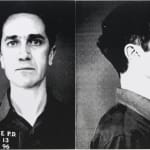Deborah Kass
121.9 x 203.2 x 3.8 cm
Further images
Warhol's original application of the images instigated some amount of controversy, particular surrounding an unexpected episode of censorship. Set to debut as a massive mural titled "Thirteen Most Wanted Men" as part of the 1964 World's Fair in Queens, New York, the total image ended up abruptly and unceremoniously censored. Warhol was informed shortly before the fair opened that he had only 24 hours to remove or replace the mural. After his initial solution was rejected (25 portraits of the fair's president), Warhol accepted that the work would be destroyed and it was painted over with aluminum house paint. Critics past and present have comment on the irony that a work pertaining to criminals was legally challenged, with some speculating that Warhol may have intended for the work to draw controversy. Warhol would reuse the screens created for the mural to create paintings on canvas which would later be shown at Sonnabend Gallery in the later 1960s.
Kass's appropriation similarly plays with a set of ironies, dual interpretations abound when considering content and placement of the work. Images of exhibition curators to be curated into art exhibitions, images of art collectors to be bought and collected as art. At contrast with Warhol's appropriations of government documents, Kass's series instead had volunteers, the individuals involved allowing themselves to be photographed in a collaborative gesture, even full well knowing that they were being depicted as criminals.







